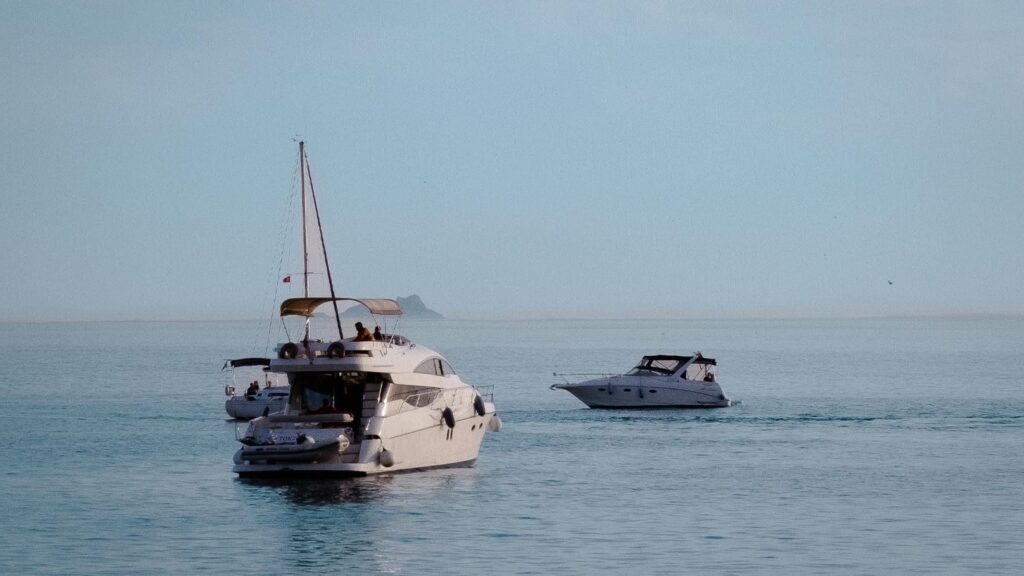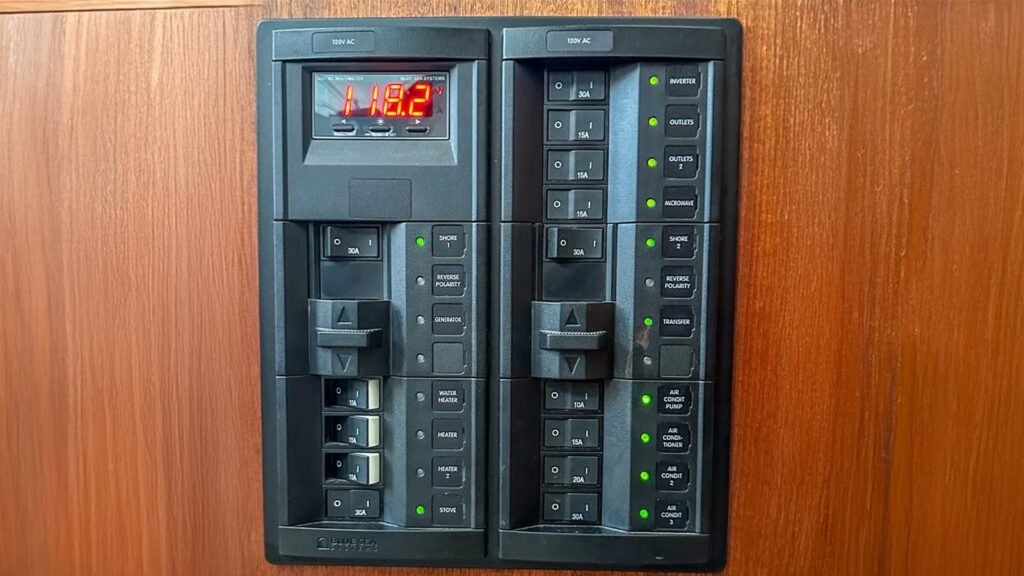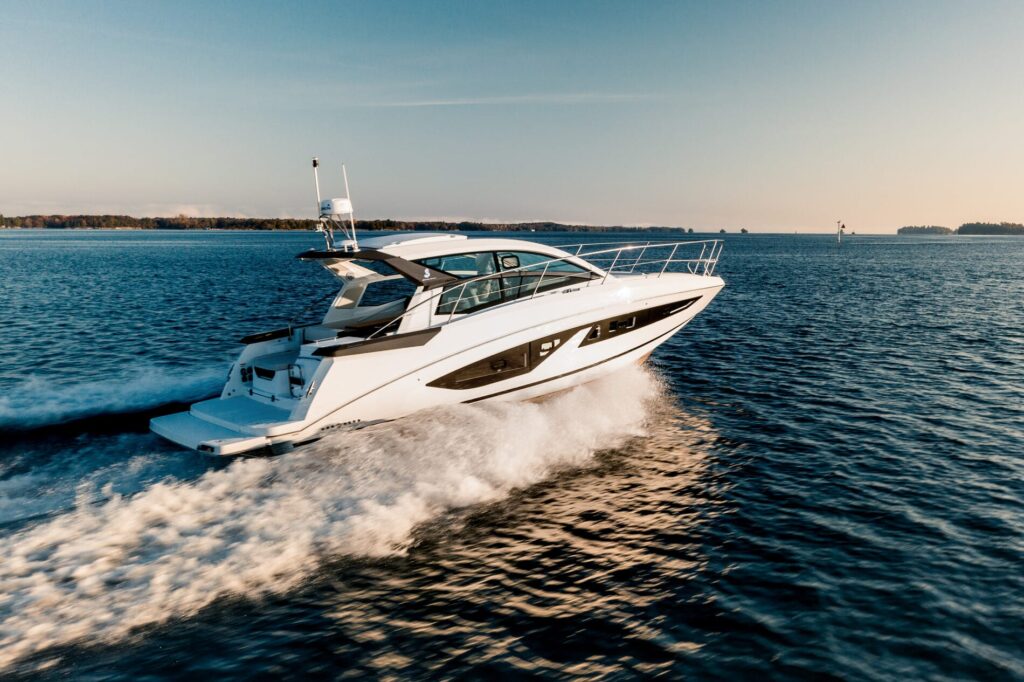Navigation Rules Every Boater Should Know

Adapted from Power Boating Made Easy, American Sailing’s new textbook for beginning powerboaters. Get your copy here and explore American Boating courses near you to put these skills into practice.
Estimated reading time: 8 minutes
Why Navigation Rules Matter
The world’s oceans, lakes, and rivers host everything from kayaks to cargo ships, all sharing the same space without the benefit of painted lanes, stoplights, or traffic signs. To keep order, mariners rely on the International Regulations for Preventing Collisions at Sea, more commonly known as the COLREGS.
These rules apply everywhere, and in the United States, vessels over 12 meters (39.4 feet) are legally required to carry a copy onboard. More importantly, every operator – regardless of vessel size – is expected to know and follow them.
Think of it like driving: you don’t just drive for yourself; you drive for everyone else, too. On the water, where boats move in all directions and at different speeds, the Navigation Rules are what make safe passage possible.
Quick Reference: Top 3 Rules Every Beginner Should Master
- Rule 5: The Lookout Rule
Always keep eyes and ears open for hazards, other boats, and sound signals. Everyone on deck should help maintain awareness. - Rule 6: Safe Speed
Go at a speed that allows you to stop or maneuver safely based on traffic, visibility, and conditions. If unsure, slow down. - Rules 16 & 17: Give-Way vs. Stand-On
One vessel must give way, the other must stand on. But if the give-way boat fails to act, the stand-on boat must maneuver to avoid collision.
Learn these three first. They’ll prevent the majority of accidents on the water.
Rule 5: The Lookout Rule
“Every vessel shall at all times maintain a proper lookout by sight and hearing…”
This rule emphasizes the skipper’s most critical job: awareness. You must always know what’s happening around your vessel. That means using your eyes and ears – watching for other boats, hazards, and aids to navigation while also listening for horn signals or hails.
Pro tip: make lookout duties a team effort. Crew on deck should call out hazards clearly, such as, “Off the starboard bow, small blue sailboat, 100 yards.”
Rule 6: Safe Speed
“Every vessel shall at all times proceed at a safe speed…”
“Safe speed” depends on conditions: weather, visibility, traffic density, and your boat’s handling. It’s not always about buoys or posted limits – it’s about judgment. When in doubt, go slower.
Rule 7 & 8: Risk of Collision and Taking Action
First, assume risk exists if there’s any doubt. Then, act decisively. A small, early course change is far more effective than a last-second maneuver. Hesitation creates confusion, and confusion leads to collisions.
Rules 16 & 17: Give-Way vs. Stand-On Vessels
In a potential collision, one vessel is the give-way vessel and must alter course. The other is the stand-on vessel and should maintain course and speed.
However, if the give-way vessel doesn’t take proper action, the stand-on vessel must act to avoid a collision. The law is clear: avoiding an accident takes priority over following the rules.
Rule 18: The Hierarchy of Vessels
Not all vessels are equally maneuverable. The rules account for this by assigning a “pecking order” of responsibility:
- Vessel not under command
- Vessel restricted in ability to maneuver
- Vessel constrained by draft
- Vessel engaged in fishing
- Sailing vessel
- Power-driven vessel
- Seaplane
In practice, this means a small motorboat should steer clear of a fishing trawler or container ship, even if technically “stand-on.” Prudence always prevails.
Head-On, Crossing, and Overtaking Situations
- Head-On (Rule 14): Two powerboats meeting bow-to-bow must both alter course to starboard and pass port-to-port.
- Crossing (Rule 15): When two powerboats cross, the vessel with the other on its starboard side must give way.
- Overtaking (Rule 13): The overtaking vessel, whether sail or power, must always keep clear.
These three situations account for most close encounters on the water. Master them, and you’ll avoid the majority of collision risks.
Staying Safe on the Water
Navigation Rules aren’t about memorizing legal jargon; they’re about building safe habits. Maintain a sharp lookout, proceed at a safe speed, know when you’re the give-way vessel, and act early. The more you practice, the more second nature these rules become.
Remember: even though laws exist, safety depends on operators knowing and applying them diligently.
new to the helm or looking to sharpen your advanced maneuvers, we’ll help you get there with confidence.





